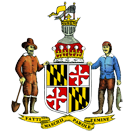| Assignment for October 8:
Bogen: Race and the Law in the First Third of the Twentieth Century - The Rise of Segregation Laws, pp. 119-126; Power, Garrett "Apartheid Baltimore Style: The Residential Segregation Ordinances of 1910-1913" Md. L. Rev. 289(1983).
Please review the research site relating to lynching in Maryland and be prepared to address the issue of lynching as an important aspect of Race and the Law in Maryland. Note the number of lynchings that have been identified so far. They exceed the official estimate used by Dr. Brugger cited below.
Because this is a work in progress, most of the biographies are not accessible. Search for Snowden and review his case which we interpret as a lynching sanctioned by the law. Do you agree?
According to http://www.spartacus.schoolnet.co.uk/USAlynching.htm,
Dr. Arthur Raper was commissioned in 1930 to produce a report on lynching. He discovered
that "3,724 people were lynched in the United States from 1889 through to 1930. Over
four-fifths of these were Negroes, less than one-sixth of whom were accused of rape. Practically
all of the lynchers were native whites. The fact that a number of the victims were tortured,
mutilated, dragged, or burned suggests the presence of sadistic tendencies among the
lynchers. Of the tens of thousands of lynchers and onlookers, only 49 were indicted and only 4
have been sentenced."
In his Maryland, A Middle Temperament, 1634-1980, Robert Brugger points out:
The race control issue exposed the old fracture in Maryland between whites who lived amidst blacks and those who did not. Manners and mores in Southern Maryland and on the Eastern Shore kept the races sharply separate. As in the old days, whites there took a paternal, sometimes patronizing, view of the Negro. They treated politely, even kindly, the black who "kept his place." They could be quickly harsh with one who did not; Princess Anne natives, for example, ostracized John Wilson, a Wilmington Methodist churchman, because on his visits to the Negro academy he shook hands with blacks, ate with them, and called black men mister. Between 1889 and 1918 the 17 lynchings that took place in Maryland numbered no more than in Nebraska (there were 78 in Virginia, 368 in Georgia). But in 15 instances blacks were victims, often for an alleged assault on a white woman, and in 12 they took place on the Shore [i.e. Eastern Shore] or in the counties of Southern Maryland. ... (p422)
... it took only a black suspected of a heinous crime to put match to gasoline. One explosion occurred in December 1931 at Salisbury, wher Mack Williams had been accused of murdering his white employer. A mob broke into the hospital where he lay and lynched him. Many Marylanders joined [Governor] Ritchie in condemning this crime, but the local newspaper spoke of "outraged feeling" and "heroic methods"; hard up for support, townsmen also portrayed Williams ahs having been under the influence of communists. In November 1933 another lynching took place a few miles below Salisbury, in Princess Anne. About five thousand men thrust authorities aside and lynched a Negro who stood accused of attacking an elderly white woman. After hanging him, the mob tor apart and burned the body. In this case Attorney General William Preston Lane, Jr., an army veteran and son of a Hagerstown newspaper publisher, learned the names of the ringleaders, who were Wicomicans, and pressed the State's attorney for action. When nothing happened Ritchie sent five hundred troops of the 5th Maryland, led by General Reckord, to Salibury to serve warrants on the suspected mob leaders. Though Reckord captured four of the nine men on Lane's list (several were "on vacation" in Virginia), a mob gathered to taunt the militiamen. Local firemen, called on to cool off the mob, turned their hoses on the troops instead. Later a Wicomico judge released the suspects before they could be taken to Baltimore for trial. ..." pp. 508-509.
|
